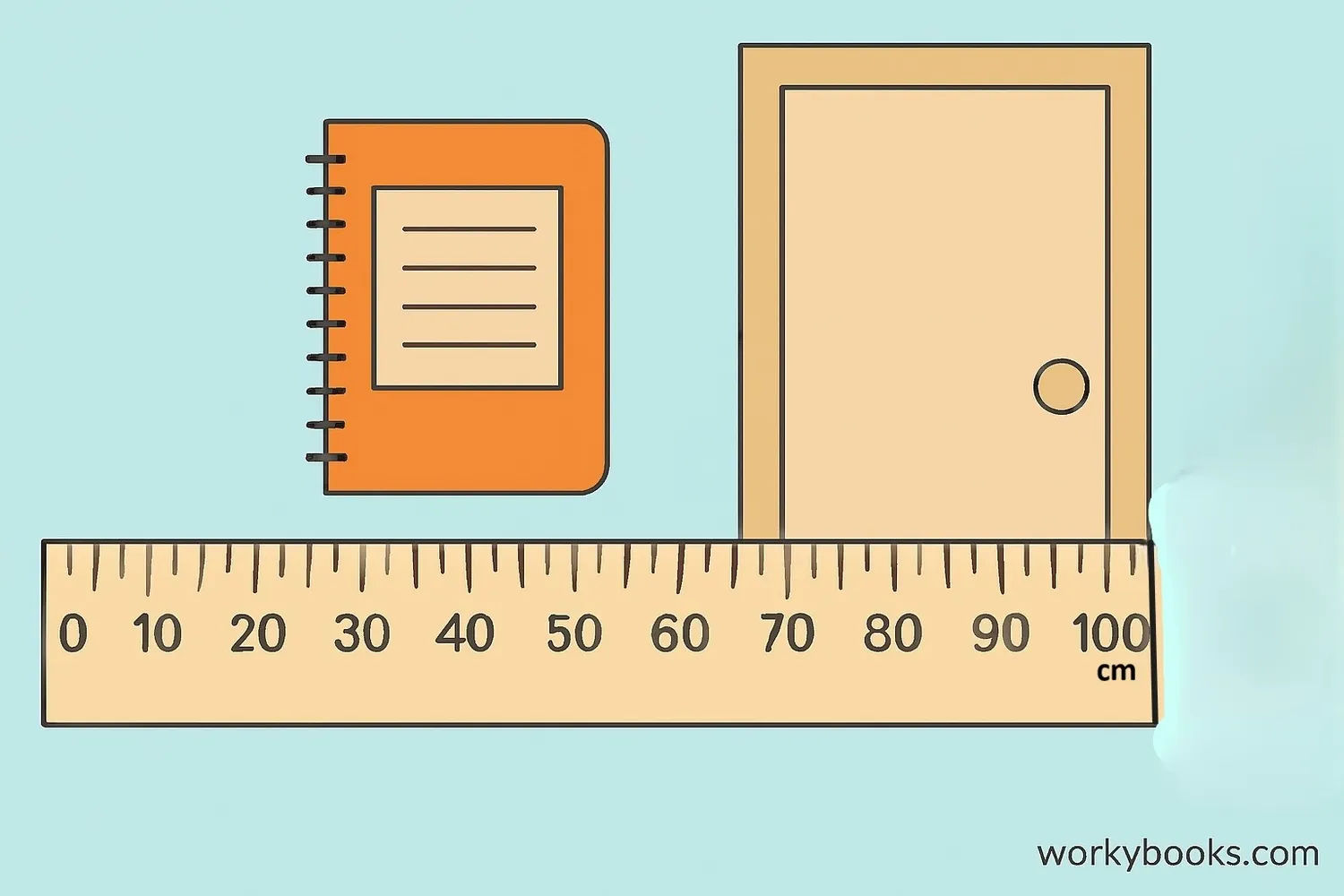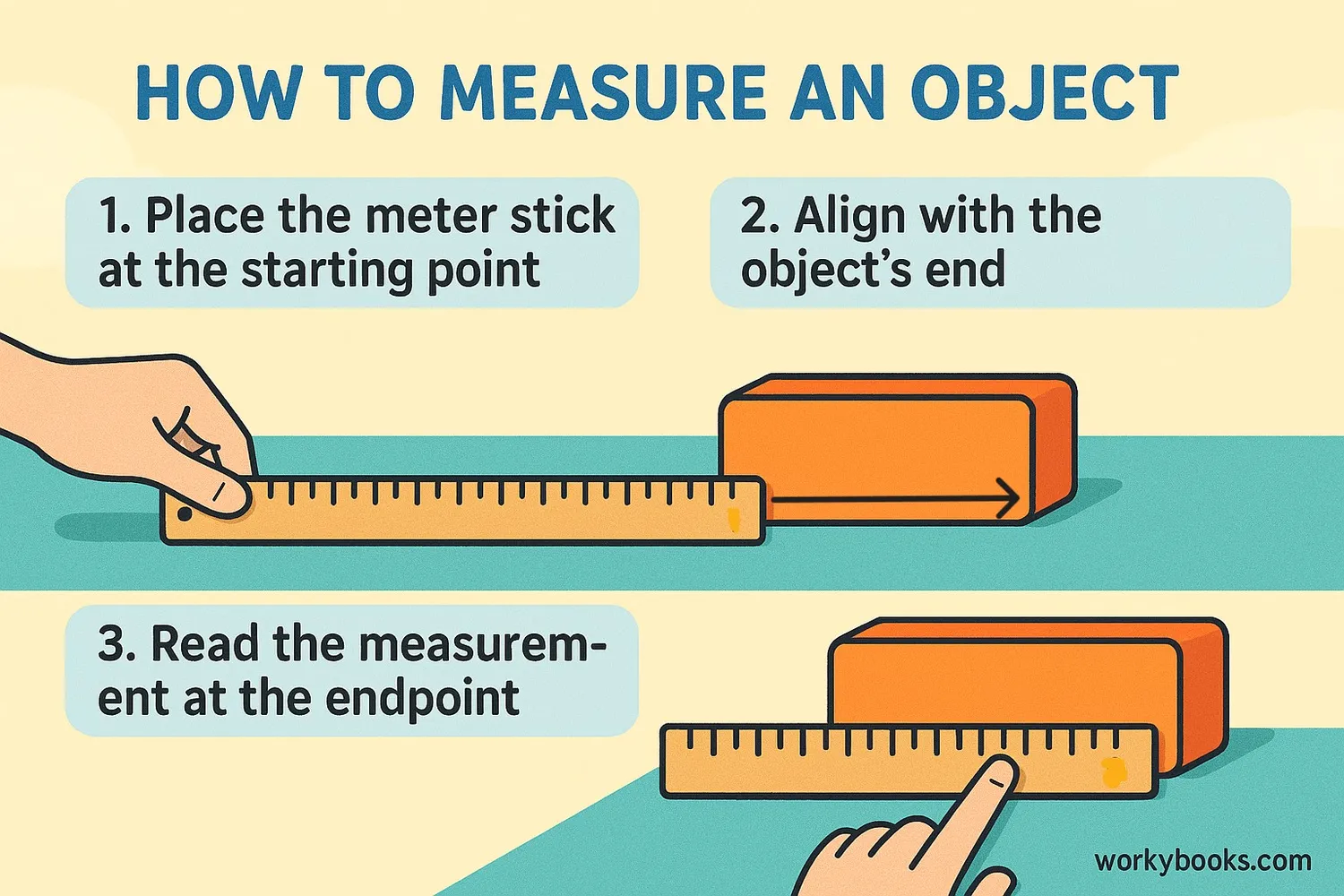Meter Stick - Definition, Examples, Quiz, FAQ, Trivia
Learn about meter sticks, how to measure length, and practice with interactive activities
What is a Meter Stick?

A meter stick is a straightedge used to measure length. It is exactly one meter long, which is the base unit of length in the metric system. Meter sticks are usually made of wood, plastic, or metal and have markings that show centimeters and millimeters.
Meter sticks are important tools in mathematics and science. They help us measure objects accurately. The metric system is used by most countries around the world because it is based on units of 10, which makes it easy to understand and use.
One meter equals 100 centimeters or 1000 millimeters. When you look at a meter stick, you'll see the long lines marking centimeters and the shorter lines marking millimeters. The numbers usually show the centimeter measurements.
Key Concept
A meter stick is exactly one meter long and is divided into 100 centimeters or 1000 millimeters.
How to Use a Meter Stick

Using a meter stick properly helps you get accurate measurements. Follow these steps:
1. Place the zero end of the meter stick at the starting point of what you're measuring.
2. Lay the meter stick flat along the object you're measuring.
3. Look straight down at the measurement markings to avoid parallax error.
4. Read the measurement at the endpoint of the object.
For example, if you're measuring a book, place the zero end at one edge of the book and see where the other edge lines up with the markings on the meter stick.
When measuring something longer than a meter, you can mark where the first meter ends and then continue measuring from that point. Remember to add the measurements together!
Measurement Tip
Remember these conversions when using your meter stick!
Remember
Always check that your meter stick is lying flat against what you're measuring for accurate results.
Meter Stick vs Yard Stick
While meter sticks and yard sticks look similar, they measure length using different measurement systems:
| Feature | Meter Stick | Yard Stick |
|---|---|---|
| Measurement System | Metric | Imperial/Customary |
| Base Unit | Meter | Yard |
| Length | 1 meter | 1 yard |
| Centimeters/Inches | 100 centimeters | 36 inches |
| Common Use | Worldwide | Mainly United States |
| Subdivisions | Centimeters and millimeters | Inches and fractions of inches |
A meter is slightly longer than a yard. One meter equals approximately 1.094 yards or 39.37 inches. This means if you placed a meter stick and a yard stick side by side, the meter stick would extend about 3.37 inches beyond the yard stick.
Most countries use the metric system and meter sticks, while the United States primarily uses the imperial system with yard sticks. Scientists around the world use the metric system because it is easier to work with and standardize.
Conversion Tip
To convert yards to meters, multiply by 0.9144. To convert meters to yards, multiply by 1.094.
Measurement Practice Quiz
Test your knowledge about meter sticks with this 5-question quiz. Choose the correct answer for each question.
Frequently Asked Questions
Here are answers to common questions about meter sticks:
Measurement Trivia
Discover interesting facts about measurement systems:
Origin of the Meter
The meter was originally defined in 1793 as one ten-millionth of the distance from the equator to the North Pole. This definition was later updated to be based on the speed of light.
Global Standard
Over 95% of the world's population uses the metric system in daily life. Only three countries (United States, Liberia, and Myanmar) have not officially adopted the metric system as their primary system.
Space Measurement
NASA uses metric measurements for all its space missions. The Mars Climate Orbiter was lost in 1999 because one engineering team used metric units while another used imperial units for calculations.
Tallest Building
The Burj Khalifa in Dubai is the world's tallest building at 828 meters (2,717 feet). That's equivalent to about 828 meter sticks stacked end to end!





